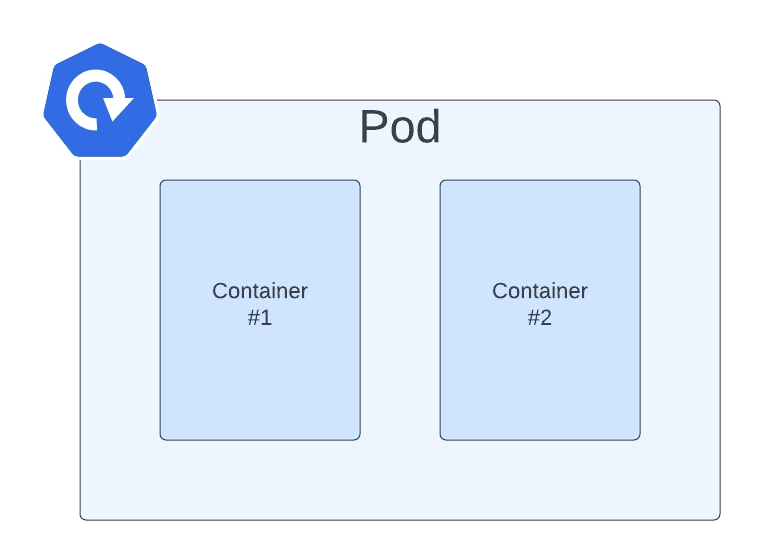Hablemos sobre la opción más peligrosa desde la perspectiva del diseño de Pods, ¡para que estés listo para usarla!

Foto de Timelab Pro en Unsplash
Una de las conversaciones habituales es sobre la composición y definición de componentes dentro de un Pod. Esto es normal para las personas que se trasladan de un despliegue tradicional a un entorno nativo de la nube, y la pregunta principal es: ¿Cuántos contenedores puedo tener dentro de un pod?
Estoy seguro de que la mayoría de ustedes han escuchado o han hecho esa pregunta en algún momento de su viaje nativo de la nube, o incluso tienen esta duda internamente en este momento, y no hay duda en la respuesta: Un solo contenedor.
¡Espera, espera! ¡No dejes el post todavía! Sabemos que eso no es técnicamente cierto, pero es más fácil de entender inicialmente; solo puedes tener un pod haciendo una cosa.
Entonces, si ese es el caso, ¿por qué existen los pods de múltiples contenedores? Y lo más importante, si esta es la primera vez que escuchas ese concepto, ¿qué es un pod de múltiples contenedores?
Comencemos con la definición: Un pod de múltiples contenedores tiene más de un contenedor en su composición. Y cuando hablamos de múltiples contenedores, no estamos hablando de tener algunos initContainers para gestionar las dependencias. Aún así, estamos hablando de tener más de un contenedor ejecutándose simultáneamente y al mismo nivel, como puedes ver en la imagen a continuación:

¿Kubernetes admite este modelo? Sí, por supuesto. Puedes definir dentro de tu sección de contenedores tantos contenedores como necesites. Entonces, desde un punto de vista técnico, no hay límite para tener tantos contenedores como necesites en el mismo pod. Pero la pregunta principal que deberías hacerte es:
¿Es esto lo que quieres hacer?
Un pod es la unidad más pequeña en Kubernetes como recordatorio. Despliegas y retiras pods, detienes y arrancas pods, reinicias pods, escalas pods. Así que cualquier cosa que esté dentro del mismo pod está altamente acoplada. Es como un paquete, y también comparten recursos. Así que es aún más crítico.
Imagina esta situación, me gustaría comprar un cuaderno, así que voy a la tienda y pido el cuaderno, pero no tienen un solo cuaderno. Aún así, tienen un paquete increíble: un cuaderno, un bolígrafo y una grapadora por solo $2 más que el precio de un solo cuaderno.
Así que piensas que este es un excelente precio porque estás obteniendo un bolígrafo y una grapadora por una pequeña parte de su precio si quisieras comprarlo por separado. Así que piensas que es una buena idea. Pero luego, recuerdas que también necesitas otros cuadernos para otros propósitos. Al final, necesitas diez cuadernos más, pero cuando necesitas comprarlos, también necesitas reconocer los diez bolígrafos y las diez grapadoras que ya no necesitas. OK, son más baratos, pero al final, estás pagando un precio razonable por algo que no necesitas. Así que, no es eficiente. Y lo mismo se aplica a la definición de la estructura del Pod.
Al final, ¿te mueves de despliegues monolíticos tradicionales a diferentes contenedores dentro de un pod para tener los mismos desafíos y problemas? ¿Cuál es el punto de hacer eso?
Ninguno.
Si no hay razón para tener dos contenedores estrechamente juntos, ¿por qué está permitido esto en la especificación de K8S? Porque esto es útil para algunos casos de uso y escenarios específicos. Hablemos de algunos de ellos.
- Contenedores de Ayuda: Este es el más común y es que tienes diferentes contenedores dentro del pod. Aún así, uno es el principal, el que proporciona una capacidad de negocio o una característica, y el otro solo está ayudando de alguna manera.
- Implementación del Patrón Sidecar: Otro enfoque común para tener esta composición es implementar el patrón sidecar. Así es como funciona al desplegar otro contenedor para realizar una capacidad específica. Lo has visto, por ejemplo, para Service Meshes, Arquitectura de Agregación de Logs, u otros componentes que siguen ese patrón.
- Exportadores de Monitoreo: Otra cosa usual de ver es usar uno de estos contenedores para actuar como un exportador de las métricas de monitoreo del componente principal. Esto se ve usualmente en arquitecturas como Prometheus, donde cada pieza tiene su exportador para ser extraído del Servidor Prometheus
También hay hechos interesantes de compartir contenedores dentro de un pod porque, como se comentó, también comparten recursos como:
- Volúmenes: Puedes, por ejemplo, definir una carpeta compartida para todos los diferentes contenedores dentro de un pod, para que un contenedor pueda leer información del otro para realizar su tarea de manera rápida y eficiente.
- Comunicación Inter-procesos: Puedes comunicarte entre contenedores usando IPC para comunicarte de manera más eficiente.
- Red: Los diferentes contenedores dentro de un pod también pueden acceder a puertos de otros contenedores simplemente alcanzando localhost.
Espero que este artículo te haya ayudado a entender por qué existe esta capacidad de tener muchos contenedores dentro del mismo pod, pero al mismo tiempo saber qué tipo de escenarios están usando este enfoque y tener algún razonamiento sobre si un nuevo caso de uso debería usar este enfoque o no.




